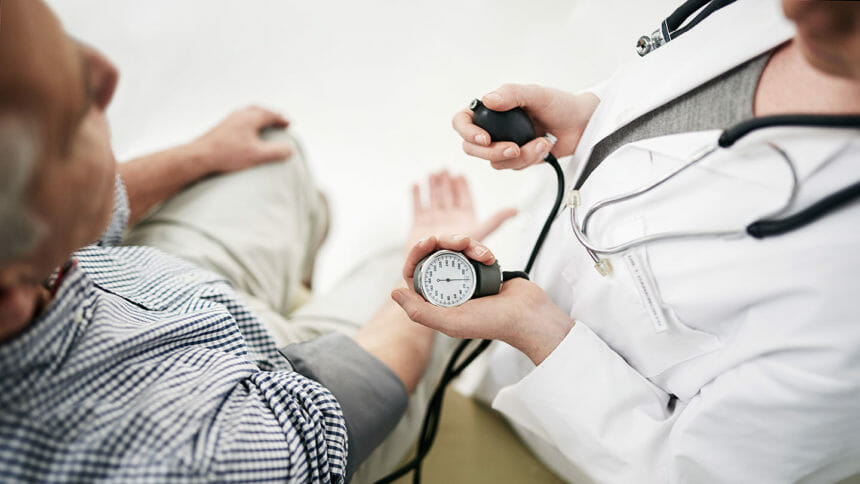
The way you’re positioned during a blood pressure reading can affect its accuracy, and supporting your arm on a table is best, a new study finds.
Lap and side positions resulted in substantial overestimation of blood pressure readings and could lead to misdiagnosis or overestimation of hypertension, according to the report published Monday in JAMA Internal Medicine.
The team evaluated three arm positions: supported on a desk, supported on a lap, and unsupported, with the arm hanging at the patient’s side. Lap support overestimated systolic pressure by 3.9 mm Hg and diastolic pressure by 4.0 mm Hg. An unsupported arm hanging at the side overestimated systolic pressure by 6.5 mm Hg and diastolic pressure by 4.4 mm Hg.
Arm position makes a “huge difference” when it comes to an accurate blood pressure measurement, Tammy Brady, MD, vice chair for clinical research in the Department of Pediatrics at the Johns Hopkins University School of Medicine and senior author of the study, said in a statement.
The team said that blood pressure tests often are conducted with patients seated on an exam table inadequate or no arm support. In some cases, a clinician holds the arm, or the patient holds an arm in their lap.
Researchers evaluated BP readings in 133 adults aged 18 to 80 between 2022 and 2023. Participants were randomly put into one of six groups that differed by order of the three seated arm positions. All participants first emptied their bladders and then walked for two minutes to mimic a typical scenario in which people walk into a clinic or office before screening takes place. Then participants then sat down with their backs and feet supported for a five-minute rest period. Participants were then fitted with a blood pressure cuff and had their BP taken under each of the three conditions, 30 seconds apart, with a digital blood pressure device.
After the measurement, participants walked for two minutes and rested for five minutes again before having a fourth set of measurements with their arm supported on a desk, to account for well-known variations that can occur in BP readings.
BP readings done with an arm on the lap or unsupported at the side were markedly higher than those obtained when the arm was supported on a desk, the data showed.
“If you are consistently measuring blood pressure with an unsupported arm, and that gives you an overestimated BP of 6.5 mmHg, that’s a potential difference between a systolic BP of 123 and 130, or 133 and 140 — which is considered stage 2 hypertension,” Sherry Liu, an epidemiology research coordinator at Johns Hopkins Bloomberg School of Public Health and study author, said in the statement.
The findings suggest that clinicians need to pay better attention to best practice guidelines, Brady said, adding that patients “must advocate for themselves in the clinical setting and when measuring their BP at home.”



